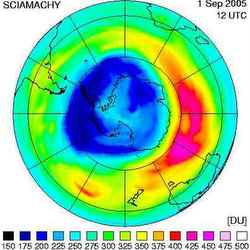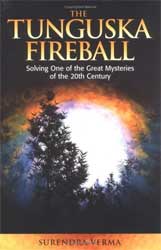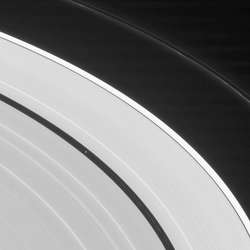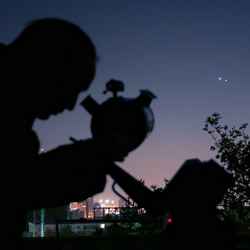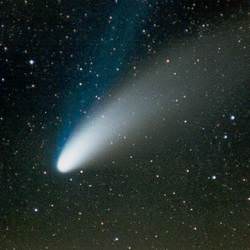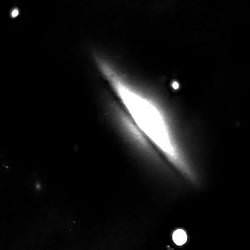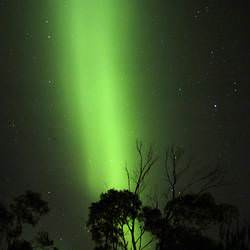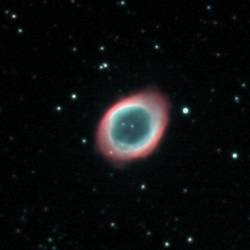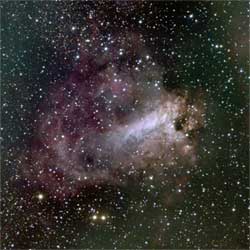
M17. Image credit: Hillary Mathis, N.A. Sharp, REU program/NOAO/AURA/NSF. Click to enlarge.
Monday, August 29 – Let’s begin our week by looking at a pair of planets that are moving apart. Just before dawn, have a look at how far Mercury and Saturn have now separated. In one week’s time they have drawn about how far apart as Jupiter and Venus were on the 22nd. Now, let’s wait until sunset as we see that Jupiter and Venus have now moved within 3 degrees of each other. The bright pair of planets make for a wonderful photographic opportunity, and tomorrow they will be much closer!
Tonight let’s celebrate dark skies by aiming our binoculars and telescopes about a fist’s width north of the top of the teapot’s lid – Kaus Borealis. The object of our interest tonight has many names, but let’s start by calling it M17.
Discovered twice within months in 1764 – first by Swiss astronomer de Cheseaux and then Charles Messier – this bright nebula is often referred to as the “Omega”, or “Swan” nebula. This huge area of nebulosity will appear almost like a comet in binoculars and take on the shape of the figure “2” for small telescopes. Upon closer scrutiny with larger aperture, the viewer will note the area inside the curve could possibly contain obscuring dark dust. At a dark sky location, or with the application of a filter, you can see many long filaments that radiate out from the central structure. Unlike previous study M8, the M17 does not contain any type of star cluster, although you can see many of them glittering in the folds of nebula. It is estimated that perhaps only 35 of these stars are actually associated with the “Swan” and the illuminating stars appear to be hidden within the brighter portions of the nebula itself. While estimates in distance are unclear, it is believed the M17 is about 5,700 light years from our own galaxy. It’s awesome!
Tuesday, August 30 – For a very large portion of the United States and Mexico, you will have the opportunity to watch the Moon occult bright star Upsilon Geminorum in the early morning hours. Please check this IOTA webpage for details on times and locations in your area. Clear skies!
If you were clouded out at sunset last night, look again at the western horizon as Venus and Jupiter have moved to just 2.2 degrees apart. Take a picture. Tomorrow they will be even closer.
Don’t put away your binoculars just because you think this next study is beyond you… Just lift your sights three degrees higher than the “Omega” and tonight we’ll fly with the “Eagle”.
Small binoculars will have no trouble distinguishing the cluster of stars discovered by de Cheseaux in 1746, but larger binoculars and small telescopes from a dark sky site will also see a faint nebulosity to the region that was reported by Messier in 1764. This “faint light” will remind you highly of the reflection that is seen within the Pleiades, or “Rosette” nebula. While the most outstanding views of the “Eagle” nebula are in photographs, larger telescopes will have no problem picking out a vague cloud of nebula, encased stars and an unusual dark obscuration in the center which has always reminded this author as a “Klingon Bird of Prey”. While all of this is very grand, what’s really interesting is the little notch on the northeast edge of the nebula. This is easily seen under good conditions with scopes as small as 8″ and is undeniable in larger aperture. This tiny “notch” rocketed to worldwide fame when viewed through the eyes of the Hubble. It’s name? “The Pillars of Creation”.
Wednesday, August 31 – Tonight at sunset, return again to the western horizon to have a look at our bright planetary pairing. Just 24 hours before their closest approach, you will see brilliant Venus only one and a half degrees below the Mighty Jove. This is a picture-perfect moment of our solar system’s orbits, so be sure to watch and tomorrow night brings this pair even nearer together.
Tonight will be the peak of the Andromedid meteor shower. With the Moon in our favour and the constellation of Cassiopeia already risen, let’s take a break from our studies and watch the show. For those of you in the northern hemisphere, look for the lazy “W” of Cassiopeia to the northeast. This is the radiant – or relative point of origin – for this meteor stream. At times, this shower has been known to be spectacular, but let’s stick with an accepted fall rate of around 20 per hour. These are the offspring of Beila’s Comet and have a reputation for red fireballs with spectacular trains. Happy “trails” to you!
Thursday, September 1 – In 1859, solar physicist – Richard Carrington, who originally assigned sunspot rotation numbers – observed the first solar flare ever recorded. Naturally enough, an intense aurora followed the next day. 120 years later in 1979, Pioneer 11 makes history as it flies by the Saturn. We often take our progress in space for granted, but look at how much has been achieved in just our lifetimes. A great many of us were born well before space exploration started, and quite a few of us well remember 1979. As we tip our hats toward Saturn this morning, realize in just a short period of 25 years that we have gone from just flying past Saturn to actually having landed on one of its moons.
This is it. Mark your calendars for today and take your family out to view the visually most striking planetary pairing of the year! On the western horizon just after sunset, Venus and Jupiter will have now moved to just slightly over one degree apart. Don’t miss your opportunity to photograph or witness this stunning event!
Tonight we are going to take a journey once again toward an area which has intrigued this author since I first laid eyes on it with a telescope. Some think it difficult to find, but there is a very simple trick. Look for the primary stars of Sagitta just to the west of bright Albireo. Make note of the distance between the two brightest and look exactly that distance north of the “tip of the arrow” and you’ll find the M27.
Discovered in 1764 by Messier in a three and a half foot telescope, I discovered this 48,000 year old planetary nebula for the first time in a 4.5″ telescope. I was hooked immediately. Here before my eager eyes was a glowing green “apple core” which had a quality about it that I did not understand. It somehow moved… It pulsated. It appeared “living”.
For many years I quested to understand the 850 light year distant M27, but no one could answer my questions. I researched and learned it was made up of doubly ionized oxygen. I had hoped that perhaps there was a spectral reason to what I viewed year after year – but still no answer. Like all amateurs, I became the victim of “aperture fever” and I continued to study the M27 with a 12.5″ telescope, never realizing the answer was right there – I just hadn’t powered up enough.
Several years later while studying at the Observatory, I was viewing through a friend’s identical 12.5″ telescope and as chance would have it, he was using about twice the magnification that I normally used on the “Dumbbell”. Imagine my total astonishment as I realized for the very first time that the faint central star had an even fainter companion that made it seem to wink! At smaller apertures or low power, this was not revealed. Still, the eye could “see” a movement within the nebula – the central, radiating star and its companion.
Do not sell the “Dumbbell” short. It can be seen as a small, unresolved area in common binoculars, easily picked out with larger binoculars as an irregular planetary nebula, and turns astounding with even the smallest of telescopes. In the words of Burnham, “The observer who spends a few moments in quiet contemplation of this nebula will be made aware of direct contact with cosmic things; even the radiation reaching us from the celestial depths is of a type unknown on Earth…”
Friday, September 2 – If you were clouded out last night, don’t worry. Both Venus and Jupiter are still making an awesome appearance on the western sunset horizon. Now separated by about a degree and a half, watch in the days ahead as the planets once again begin to distance themselves and slowly head away towards the Sun.
When skies are dark, it’s time for us to head directly between the two lower stars in the constellations of Lyra and grab the “Ring”.
First discovered by French astronomer, Antoine Darquier in 1779, the “Ring” was cataloged later that year by Charles Messier as the M57. In binoculars the “Ring” will appear as slightly larger than a star, yet it cannot be focused to a sharp point. To a modest telescope at even low power, the M57 turns into a glowing donut against a wonderfully stellar backdrop. The average accepted distance to this unusual structure is believed to be around 1,400 light years and how you see the “Ring” on any given night is highly attributable to conditions. As aperture and power increase, so do details and it is not impossible to see braiding in the nebula structure with scopes as small as eight inches on a fine night, or to pick up the star caught on the edge in even smaller apertures.
Like all planetary nebula, seeing the central star is considered the ultimate of viewing. The central itself is a peculiar bluish dwarf which gives off a continuous spectrum and might very well be a variable. At times, this shy, near 15th magnitude star can be seen with ease with a 12.5″ telescope, yet be elusive to 31″ in aperture weeks later. No matter what details you may see, reach for the “Ring” tonight. You’ll be glad you did.
Saturday, September 3 – Tonight is New Moon and a great opportunity to have another look at all the things we’ve studied this week. However, I would encourage those of you with larger binoculars and telescopes to head for a dark sky location, because tonight we are going on a quest…
The quest for the holy “Veil”.
By no means is the Veil Nebula Complex an easy one. The brightest portion, NGC 6992, can be spotted in large binoculars and you can find it just slightly south of a central point between Epsilon and Zeta Cygnii. The NGC 6992 is much better in a 6-8″ scope however, and low power is essential to see the long ghostly filaments which span more than a degree of sky. About two and a half degrees west/southwest, and incorporating star 52 is another long narrow ribbon of what may be classified as a supernova remnant. When aperture reaches the 12″ range, so does the true breadth of this fascinating complex. It is possible to trace these long filaments across several fields of view. They sometimes dim and at other times widen, but like a surreal solar flare, you will not be able to tear your eyes away from this area. Another undesignated area lies between the two NGCs, and the whole 1,500 light year distant area spans over two and a half degrees. Sometimes known as the “Cygnus Loop”, it’s definitely one of the summer’s finest objects.
If you’re out after midnight, be sure to have a look at growing Mars. In 1976, the Viking 2 lander touched down on Mars – about 7 weeks after Viking 1. Both Spirit and Opportunity are still going strong, so don’t miss out on this year’s adventures to the Red Planet.
Sunday, September 4 – No luck at spotting Mercury just before dawn? Then grab your binoculars this morning and look bright Regulus on the horizon. You’ll find the speedy inner planet about one degree to Regulus’ north.
Skies will still be very dark tonight, Of course, studying some of the summer’s finest means that we’d be very remiss if we didn’t look at another cosmic curiosity – “The Blinking Planetary”.
Located a couple of degrees east of visible star Theta Cygnii, and in the same lower power field as 16 Cygnii, the NGC 6826 is often referred to as the “Blinking Planetary” nebula. Viewable in even small telescopes at mid to high power, you’ll learn very quickly how it came about its name. When you look directly at it, you can only see the central 9th magnitude star. Now, look away. Focus your attention on visual double 16 Cygnii. See that? When you avert, the nebula itself is visible. This is actually a trick of the eye. The central portion of our vision is more sensitive to detail and will only see the central star. At the edge of our vision, we are more likely to see dim light, and the planetary nebula appears. Located around 2,000 light years from our solar system, it doesn’t matter if the “Blinking Planetary” is a trick of the eye or not… Because it’s cool!
I hope you enjoy this week’s studies, because I thoroughly intend to do the same at the Black Forest Star Party! Let’s hope we all have clear skies. Now, I’m outta’ here until the Moon returns. Until then? May all your journeys be at light speed…~Tammy Plotner
